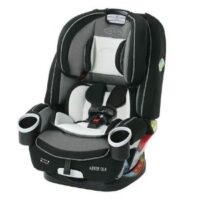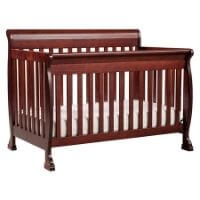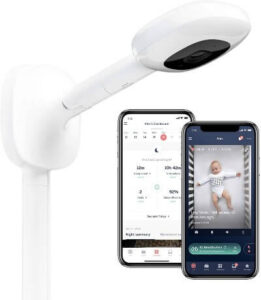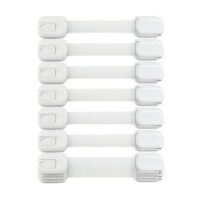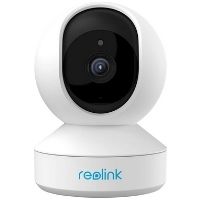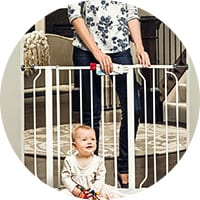Each car seat model works slightly differently, but most car seats fasten in to the car through anchors (also known as the LATCH system) or seat belt straps. You should consult your car seat’s manual to determine which specific method your seat uses.
How Do I Securely Install a Car Seat?
For over 11 years, SafeWise experts have conducted independent research and testing to write unbiased, human reviews (not robots). Learn more.
By signing up, you agree to our Terms and Conditions and Privacy Policy.
How to install different car seat types
How to install a car seat properly depends on the type of car seat you have. There are three types of car seats, each for a different child age range: rear-facing car seats, front-facing car seats, and booster seats.
While age is a good guideline for switching car seat types and installing a new one, following the height and weight guidelines in your car seat's instructions is a better guide to follow.
Do not transition your child's seat too early.
How to install rear-facing car seats
Start by checking your car seat manual instructions. Be sure to get a car seat that fits your vehicle's make and model. We recommend this guide from the NHTSA to start. Rear-facing seats are generally best for infants to children up to three years old.
Install your rear-facing car seat in the back seat by using either the lower anchors on the car seat or the vehicle's seat belt in place. If you're choosing the second option, be sure to lock the seat belt according to your vehicle manual's instructions.
Once secured into your backseat, check that the car seat does not move side to side and sits at the correct angle. Most rear-facing seats have an angle indicator and adjusters to make this easier.
Finally, thread the harness straps through the slots at or below your kiddo's shoulders. Correct any twisting or tangles, the seat straps should lie flat on your child's chest.
How to install front-facing car seats
Forward-facing car seats are designed for children aged one to seven. Before transitioning them to a front-facing seat, be sure they meet the top of your car seat's required weight and height range. Switching early can result in injury during a crash.
To get started, refer to your car seat and vehicle manual. Like the rear-facing seat, your front-facing car seat must be secured using a seatbelt or LATCH system built into your vehicle.
Be sure the car seat does not move left to right or forward. The harness slots should sit at or above your child's shoulders.
How to install booster seats
Booster seats generally fit kids aged four to twelve. Before they graduate to a new kind of car seat, be sure they meet the maximum height and weight requirements according to your booster seat.
Installing a booster seat is much easier than rear-facing or front-facing car seats. As always, check the seat's manual before starting. Most boosters typically use the vehicle's installed safety belts.
Installing your car seat or booster seat safely
No matter what type of car or booster seat you have, installing a car seat will always involve certain standard guidelines. These steps will ensure a secure car seat installation.
- Read the owner's manual: Every car seat or booster seat comes with thorough instructions from the manufacturer. This manual will include detailed information about how to install your car seat. Don’t skip ahead and try to guess about the proper installation. The best way to securely install a car seat is by thoroughly reading and following the directions provided by the manufacturer.
- Review your car’s manual: Cars come with different car seat safety features that will help you securely install your car seat. Some have anchors built in to the seats that are used to secure a car seat. Refer to your vehicle’s manual to find out if your car has anchors and where they are located.
- Put your car seat in the right spot: The back seat is the safest place in the car for children to ride. Rear-facing car seats should always be installed in the back seat, but kids should stay in the back seat after graduating from rear-facing seats, too—even in a front-facing or booster seat. If possible, place the car seat in the center of the back seat, which is the safest spot in the vehicle. Car seats should never be placed in seats with active airbags.
- Lock seat belts: If your car doesn’t come with lower anchors, check the owner's manual to find out how to lock the seat belt. Locking the seat belt once the car seat is installed adds extra security and ensures that the belt won’t come loose.
- Use the tether strap: Some front-facing car seats come with an extra strap included as an additional safety measure. The tether is usually located at the top of the seat and should be attached to the vehicle to prevent head movement in the event of a crash.
- Tighten it up: Once the car seat is installed and affixed to the anchors or seat belt, make sure everything is as tight as possible. Wiggle the seat back and forth and from side to side. If it moves more than one inch in any direction, you need to tighten up the restraints that secure the seat to the car.
- Adjust the angles: When using rear-facing car seats, you need to make sure that the base of the seat is level. If the base is angled, the child’s head can fall forward, making them less safe during vehicle travel. Most car seats have level indicators on the side of the seat to help you identify if the base is not level.
Keeping your child safe whether you’re on the road or at home is a top priority. Be sure to save this child safety seat how-to, and bookmark family safety resources, to make sure you’re prepared for safety in every situation. We also have helpful guides to choosing a reliable car seat or booster seat, so read through that to ensure you find a safe seat for your little one

Source: NHTSA.gov
Compare the best baby safety products
Amazon.com price as of post date. Offers and availability may vary by location and are subject to change. Read full disclaimer.
*Amazon.com price as of post date. Product prices and availability are accurate as of the date/time indicated and are subject to change. Any price and availability information displayed on Amazon at the time of purchase will apply to the purchase of this product. Safewise.com utilizes paid Amazon links.
Recent Articles




